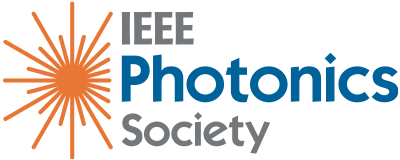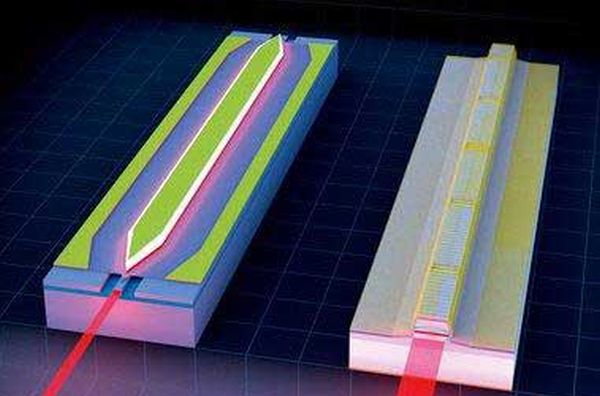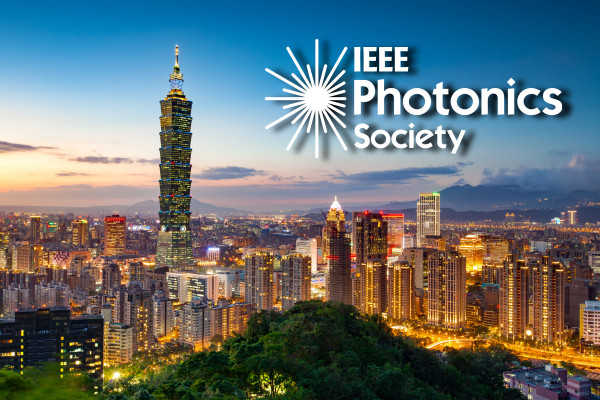By Ryan Aguinaldo
Quantum wells have become an indispensable part of modern laser design. The incorporation of quantum wells in a semiconductor laser’s active region has afforded the laser designer the ability to precisely tune the energies of radiative transitions thus yielding access to lasing wavelengths not naturally offered by bulk materials. Central to the engineering of quantum wells and other quantum structures is the ability to calculate the effective band structure that arises from the periodic potential that arises from the presence of multiple quantum wells. Unfortunately for some, this is not an easy task unless one is analyzing only the simplest of toy models; the actual calculations for any useful system will be much more involved. Fortunately for Vurgaftman, Lumb, and Meyer, they have been able to capitalize on such challenges to make distinguished careers in performing band structure calculations and performing the relevant materials analyses that allows such calculations. Indeed, included among the top-cited publications of Vurgaftman and Meyer are some of the standard references for compound semiconductor band parameters. What the authors have therefore provided in Bands and Photons in III-V Semiconductor Quantum Structures is a complete and fully self-contained treatise on calculating electronic band structures for the purpose of developing photonic devices.
While precise knowledge of a semiconductor’s band structure is equally important for advanced transistor design, the authors’ focus here is chiefly on optical transitions and photonic devices. The book is therefore aptly titled; however, some remarks are in order. The book, owing to the bands part of its title, is first, foremost, and rightly so a book on calculating band structure. Seven chapters are devoted to such calculations with an additional two chapters compiling band parameters for most of the III-V materials that one is likely to encounter. When it comes to the photons part of the book’s title, just two chapters are devoted to the theory of optical absorption and emission, which consists of one chapter each for transitions in bulk semiconductors and in quantum structures. This, of course, is not a discrepancy but rather indicative of where the challenges reside. Much mathematical machinery is needed to calculate band structures, which includes picking the right form of the Hamiltonian for an intended band structure, then ultimately deriving various matrix elements. Once these matrix elements are in hand, then, in a relatively more straightforward procedure, optical parameters are readily determined by plugging those matrix elements into expressions following from Fermi’s golden rule. This, of course, is a very streamlined description of the procedure; the authors do fine job of presenting the rigorous details, along with various words of warning and remarks on exceptions and side items of interest.
Continuing remarks on the book’s title, indeed the vast materials focus is on III-V semiconductors. With that said, the authors do a fine job of including side notes on more exotic materials, such as II-VI semiconductors and graphene, when it serves to make a good point or counterpoint to their discussion. For example, the authors justify the effort spent in analyzing (near-)zero gap semiconductors by reminding the reader that these are actually realistic scenarios for HgCdTe alloy and graphene. Finally, on the quantum structures part of the book’s title (which is essentially synonymous with the term nanostructures). The focus here is chiefly on quantum wells and their associated superlattices; however, several brief sections on nanowires and quantum dots are included at sensible points in the book as logical extensions of quantum well analysis to higher-dimensional confinement (i.e. lower-dimensional nanostructures).
All of the foregoing features of this book are contained coherently within three parts. Part I contains the complete theory as it relates to bulk semiconductors. Part III expands the theory to cover the peculiarities of quantum structures, including detailed, step-by-step descriptions of computational techniques for quantum-confined band structures. Part II contains the aforementioned chapters that compile band parameters. This part is to be noted as it is a complete and modern update of the band parameter compilations published earlier in 2001 by Vurgaftman and Meyer and then expanded later that same decade.
A final Part IV contains an additional four chapters surveying the major photonic devices that are enhanced or enabled by III-V quantum structures. Such devices include quantum cascade and III-N lasers, quantum well photodetectors, and quantum dot solar cells, among others. These chapters give a succinct overview of these devices, keeping in mind that whole volumes are often devoted to each device. The inclusion of this discussion is welcomed though as the focus quickly shifts from fundamental device analysis to the specific things that quantum structures do to enhance the device, which is not always easy to find in an overview format.
The authors do an excellent job of truly making this book self-contained. A junior graduate student can pick up this book after a good course on quantum mechanics and introductory solid-state physics. A gifted or otherwise adventurous student may actually skip the latter as the authors start off with a quick yet thorough and insightful introduction to band theory, including just enough elementary crystallography. Such insight goes as far as making passing mention of tangential topics, such as pilot wave theory, sub-wavelength light, and the Klein-Gordon equation, when it helps to elucidate a specific feature of the bands. Somewhat particular, discussion of the reciprocal lattice is deferred until it is explicitly needed in a later chapter. One minor omission is a brief review of atomic orbital theory. Covalent bonding arising primarily from s- and p-orbitals directly affects the band structure, with specific orbitals often associated with distinct bands. These are points that are discussed repeatedly throughout the book. Yet, unless they possess a physical chemistry background, many students lack intimate familiarity with this topic.The authors strive to develop the theoretical techniques from fundamental principles, including detailed derivations that forgo the need to reference other literature. End-of-chapter references are included, which are of a more general nature, pointing to alternate or expanded presentations of the material discussed in this book. In-line citations are not present, pointing to the authors’ intent in writing a self-contained book. The majority of the book utilizes the 8-band k∙p method; however, the authors give insight to those cases for when even eight bands are two much and they also include brief introductions to other techniques such as tight-bonding, effective bond-orbital, and empirical pseudopotential methods. Bands and Photons is truly a welcomed addition to the literature on semiconductor optics and will be of great utility to a wide range of researchers in this field.




